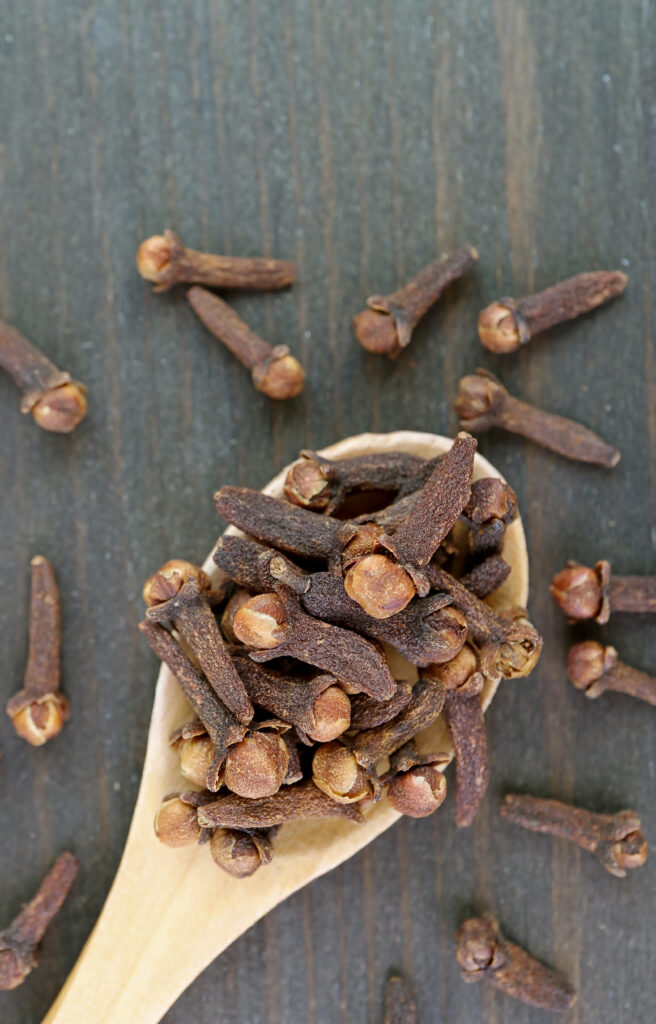Lavanga
Home
Lavanga
Lavanga

BOTANICAL NAME
Syzygium aromaticum

FAMILY
Myrtaceae

SANSKRIT NAME
Bhadrasriya, devapushpa, divyagandha

ENGLISH
Cloves

HINDI
Laung, lavang

KANNADA
Lavanga

MALAYALAM
Grambu

TELUGU
Karavulu, lavangamu

TAMIL
Kirambu

MARATHI
Lavang
DISTRIBUTION

Found in many Asian islands. In India cultivated mainly in Kerala and Tamilnadu
PARTS USED
Floral bud, clove oil
DOSE
Churna:1-2gm, oil: 1-3 drops
CHEMICAL CONSTITUENTS
Polyoxygenated chromone, eugenol, naphthalene, ß caryophyllene, methyl alcohol , methyl benzoate, etc.

AYURVEDIC PROPERTIES
QUALITY (GUNA)
Laghu , snigdha
TASTE (RASA)
Tikta, katu
METABOLISM (VIPAKA)
Katu
POTENCY (VIRYA)
Shita
IMPACT (PRABHAVA)
Chedana, netrya
PHARMACOLOGICAL ACTION
- Anti fungal ,anti microbial: this property makes this a good fungicidal.
- Anti carcinogenic: it kills certain cancerous cells in the body.
- Anti pyretic: helps in relieving body temperature and curing if any inflammation if present.
- Anti oxidant: helps in slowering the ageing process.
- It is a good expectorant thus relieving productive cough.
- It is a good blood purifier thus helps in curing skin diseases.
THERAPEUTIC USES
- Clove buds are chewed in cases of tooth ache and its infection.
- For certain skin diseases it is applied externally.
- Clove oil is given internally for digestive disorders.
- Lavanga taila is applied externally in rheumatoid arthritis.
SOME OF THE COMMON FORMULATIONS
- Avipathikara churna
- Lavangadi vati
- Khadiradi vati
- Babbularishta
- Eladi churna
- Irimedadi taila
- Karpuradi churna
- Lavangadi vati etc
